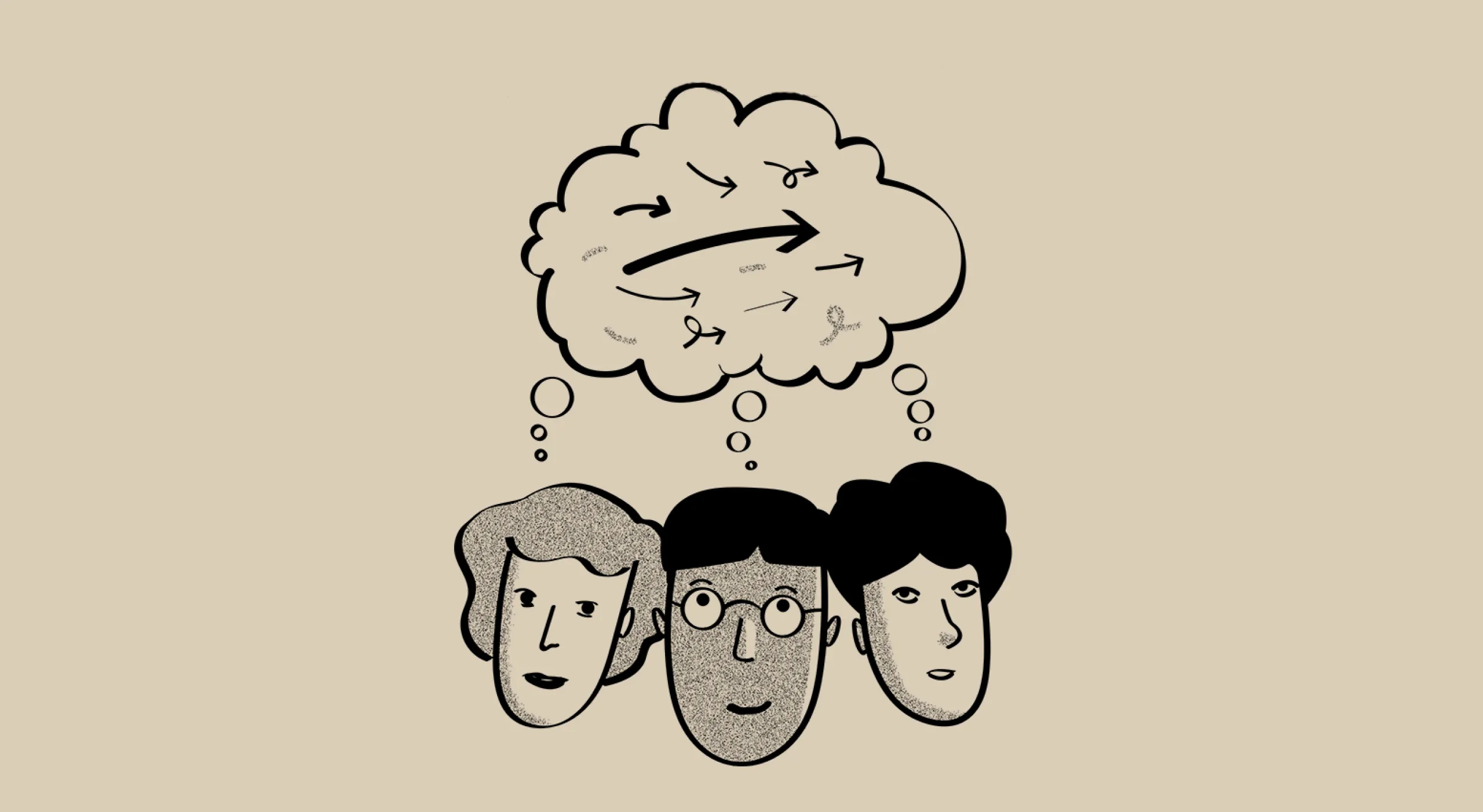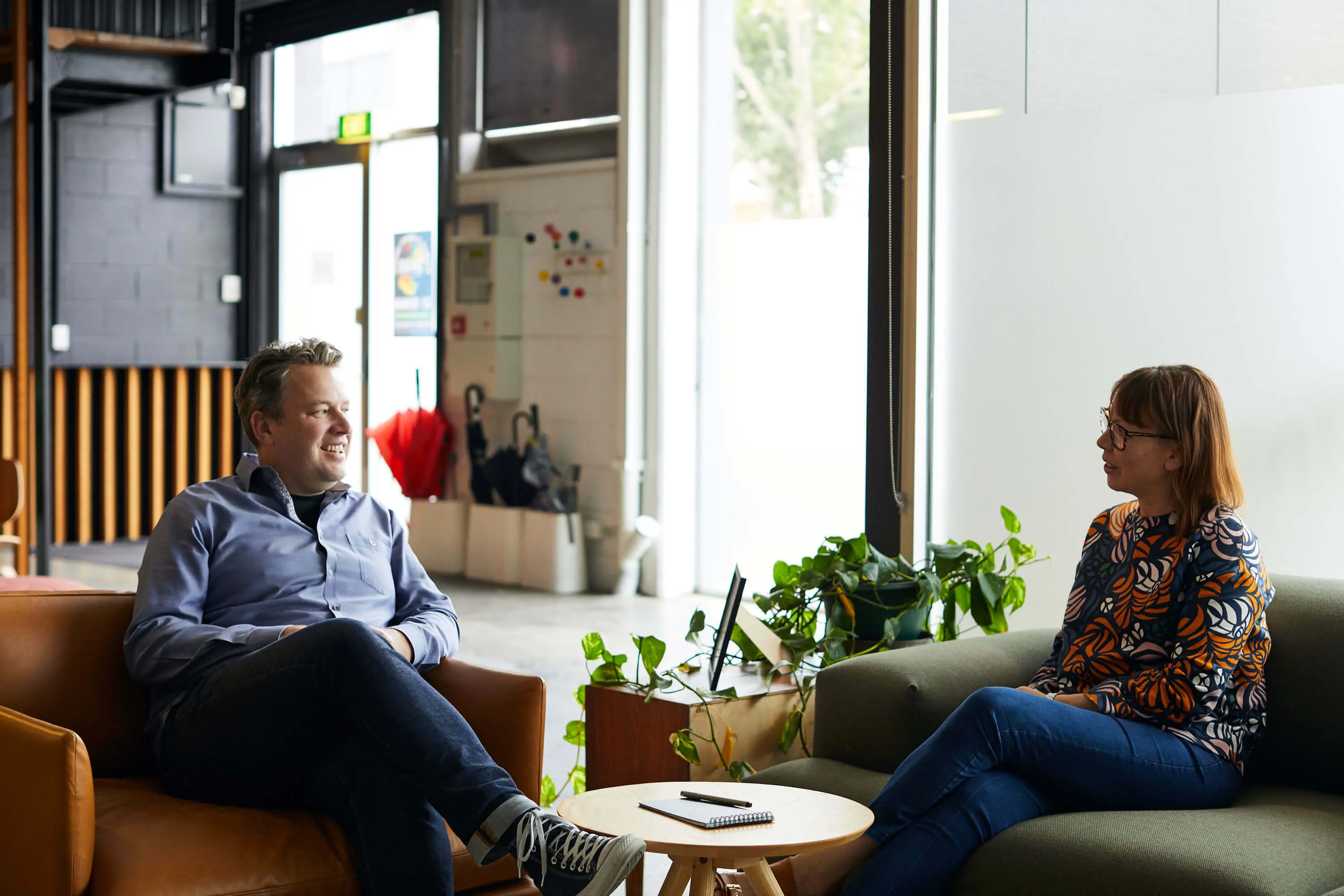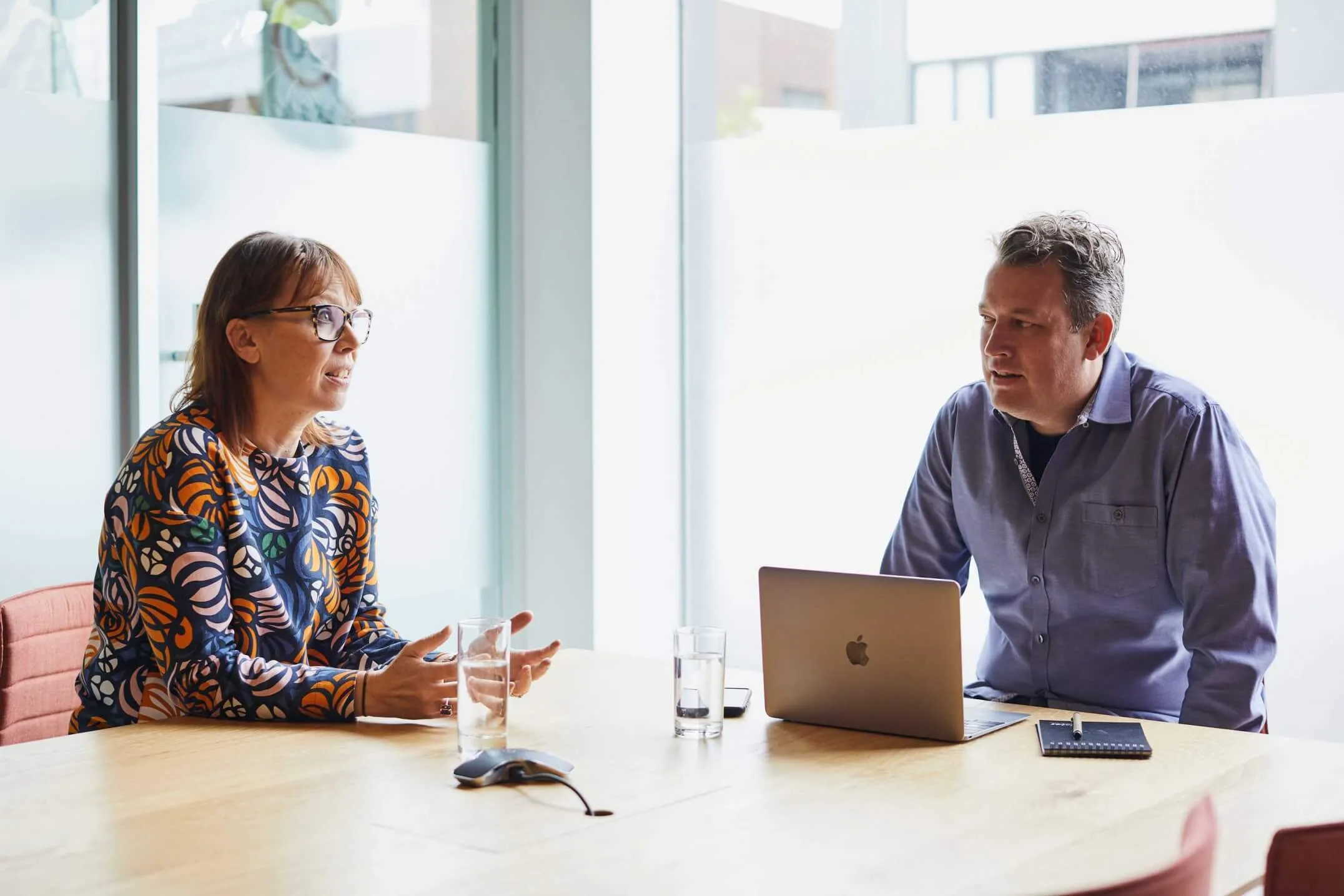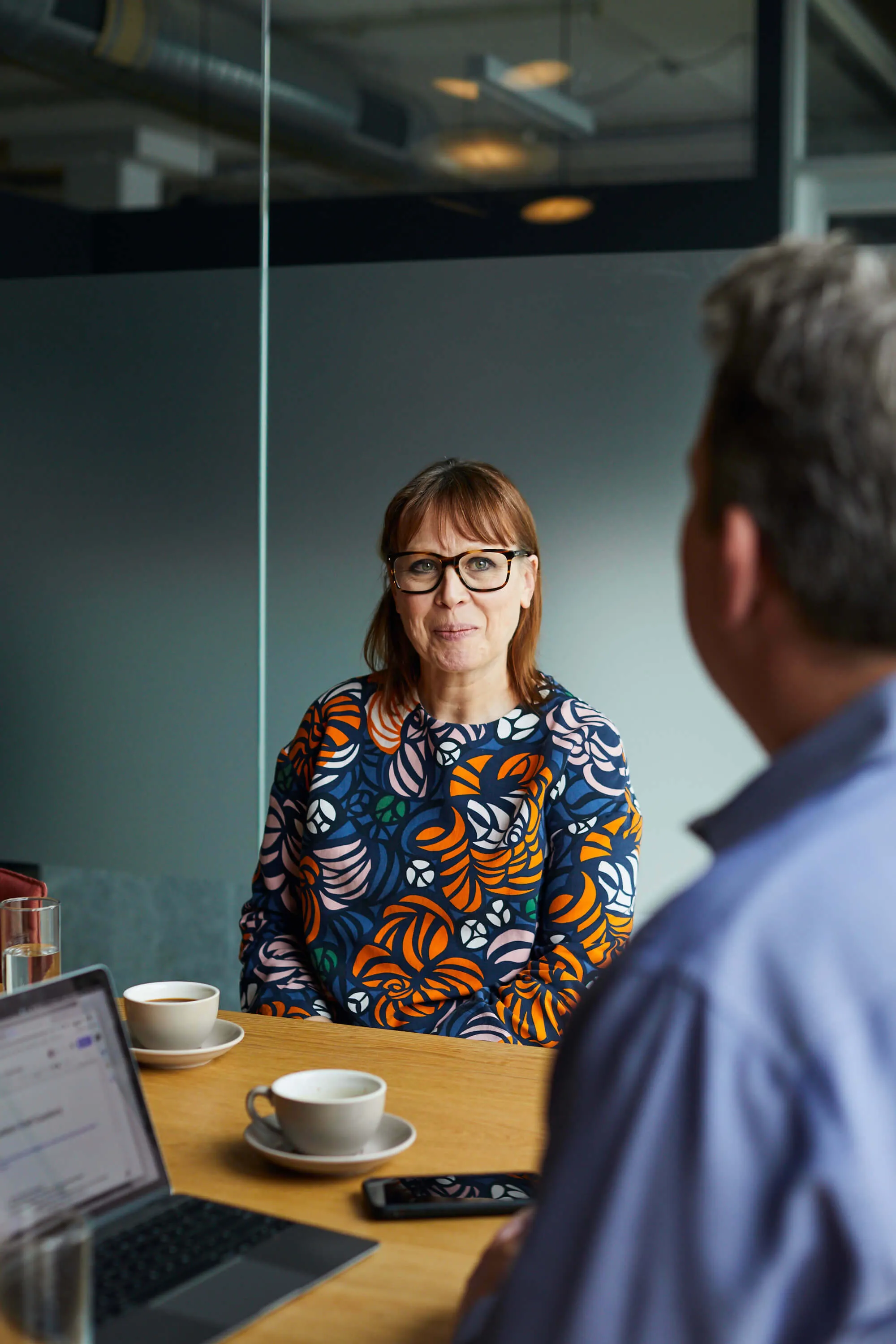How can innovative ideas bring industries and sectors together to help solve some of the most challenging issues of our time?
Damon O'Sullivan, CEO at Today spoke with Amanda Robinson, Head of Social Innovation at the Australian Red Cross , to find out how the global aid agency uses emerging technologies to increase their impact and ensure that the most vulnerable members of society are not left behind.

In conversation
Amanda Robinson, Head of Social Innovation at the Australian Red Cross
Damon O'Sullivan, CEO at Today

Let’s get started with a definition: what is Social Innovation?
Social Innovation is about enabling different actors to collaborate in new ways in order to tackle some of the most wicked problems in society. This includes rethinking some of the structural barriers to achieving progress. For example, how do we work with or lobby government to change policy for larger social impact?
Broadly speaking, Social Innovation is about finding a very holistic approach to innovating with a social agenda, with the ultimate goal being a stronger civil society.
It seems as if Social Innovation has evolved out of the Corporate Social Responsibility (CSR) concept. How has this field changed over the last decade or so?
It’s interesting to see that shift from CSR to Social Innovation, especially for someone like me who moved from the corporate into the non-profit sector. I’ve certainly seen things evolve from that typical sponsorship idea—corporates handing over lots of money to non-profit organisations as a way of ‘giving back’—to now running their own social impact programs internally. It’s a much more collaborative, much more connected space than it used to be, which is great. Rather than handing over responsibilities to third parties, more and more companies are now trying to bake that positive impact angle right into their own culture and their business model.
I think more generally there is also a better understanding nowadays that no single actor is going to solve the big societal and global problems on their own. Collaboration across sectors and industries is necessary if we want to create truly transformational change.
You used to work at SEEK , a very successful online recruitment platform. Alongside their employment marketplace, they also developed SEEK Volunteer where non-profits can advertise volunteering roles for free. It later evolved into a social enterprise in its own right. Would you say that that’s a good example of how Social Innovation can not just do good but lead to new, unexpected opportunities?
Absolutely. The platform launched all the way back in 2000. It’s remarkable to think that 19 years ago, the SEEK founders already realised that their skills in connecting people and creating thriving marketplaces can be used as a force for good—that it doesn’t have to be an ‘either/or’ decision between making money and creating social value. The longevity of it is really impressive. They not only continued to invest in it but turned it into a success story that’s now often used as a best-practice example for Social Innovation.
What do you think is the driving force behind a project like this? Do you think business leaders expect tangible benefits further down the track or are their intentions mostly philanthropic?
In the case of SEEK, first and foremost it was the goodwill and the genuine commitment of the founders to give back to the community. They identified a real problem too, otherwise the platform wouldn’t still be around 19 years later.
That’s not to say that there is a pretty clear halo effect that benefits the commercial side of the organisation. In more recent years we recognised that the volunteering platform was very complementary to the job site. Especially for students or people wanting a career change, volunteering is a good way to gain basic skills and experiences in a new industry that could later be used to find a paid role. That brand association is a great side effect of ‘doing good’.
There is also the fact that a passionate, young cohort of workers are now entering the workforce looking for organisations with a social conscience, not just a job. At the Australian Red Cross, we’re actually working with some corporate partners such as PwC, for example, to mobilise people within their workforce and leverage their existing networks and skills to do good. That’s another example for the shift from CSR to offering more integrated Social Innovation programs.
Let’s talk a bit more about your role at the Australian Red Cross. Can you describe the role you’re in and give us some examples of what you’re working on?
I’ve been with the Australian Red Cross for about two years now. It’s a newly created role that is still evolving. Given my digital product background, my focus at the moment is on how we can leverage emerging technologies to increase their positive impact on humanity.
One project we’re working on is what we call The Identity Project, a self-sovereign blockchain-enabled tool for verifying volunteer credentials. There are currently a lot of structural barriers for volunteers to move between organisations and for those organisations to take advantage of the individual skills and experiences volunteers bring to the table. The Identity Project will make your certified credentials—such as being certified to work with children—available across participating organisations which will reduce a lot of the administrative work and make volunteering for different causes easier.
Another venture we’re setting up at the moment is called Humanitech which is about creating solutions that leverage emerging technology to deliver better humanitarian outcomes as well as research, insights and evidence to be able to advocate on behalf of humanity: how are these emerging technologies going to impact the most vulnerable people in society, for instance?

The motto in the non-profit sector is often ‘Do more with less’. Coming from the corporate world, are there many differences in the way you get work done due to limited resources?
Yeah, that motto definitely applies to us too. In terms of how it affects our work, I’ve seen two major differences.
The first one is about prioritisation. Just like in any other organisation, you want to make decisions with the best outcome for the customer in mind. However, in the context of this sector it feels a lot more real: you can find yourself in a position where you need to prioritise between helping one group of people in need and not helping another. That puts a very different lens on prioritisation.
The other emerging affect of having very constrained resources is the opportunity to collaborate more. So when we are trying to solve a particular problem, rather than each organisation going off to develop a solution in isolation, we are coming together more as a whole sector in order to pool our resources and share our lessons.
I think more generally, non-profits always need to juggle the now and the future. Allocating resources to future projects means you might not be able to have the largest possible impact now. But if you don’t invest in innovation, you may not be able to scale your impact and potentially help a lot more people in the future.
In terms of funding, is it difficult to get donors excited about things like The Identity Project? I imagine donors respond more to campaigns with real, human stories than the idea of a blockchain register for volunteers...
Yes, that’s a good point. We usually work with a lot of corporate partners, government and private donors to reach our funding goals and deliver our core programs and services. Of course, presenting them with something as abstract as a blockchain app raises some eyebrows. To fund these sorts of projects we really need to locate donors and investors who have an appetite for doing things differently and exploring new ideas. But there are a lot of really interesting and interested individuals out there, especially in the tech space. It does mean that we’ve had to re-think the way we approach these individuals and organisations: more pitch decks and less grant applications.
Are there particular emerging trends and technologies that you are most excited about?
Oh, there are so many! I already mentioned blockchain and its ability to keep track of individual credentials, but also to store identities of people fleeing conflict zones, or to allow the safe transfer of cash to people in disaster zones. These are just some examples of why blockchain has a lot of potential in the humanitarian sector
Then of course Artificial Intelligence could help us optimise delivering our services overall by making our processes more efficient. There are also very specific use cases where AI could prevent or minimise human suffering, such as in the mental health space. There is some interesting work being done right now where algorithms identify and flag expressions of loneliness or depression on social media, helping us deal with early signs of mental health issues.
Drones and satellite imagery are currently being used to assist disaster response teams in mapping the areas they go into. Drones are also deployed for delivering urgent medical supplies in remote areas, for instance.
There is no shortage of new ideas with great potential—the question is, as always, which ones to focus on and prioritise.
Do you have any advice for someone in an existing organisation who wants to start building momentum for change? How or where do you get started with Social Innovation?
It really comes down to the organisation and the appetite within that organisation to think critically about social or environmental issues.
I think any effort to drive this kind of innovation has to start within the context of the work you’re already doing. It’s worth thinking about how you can use your existing capabilities to innovate in areas that may not be as commercially lucrative but still solve a real problem. Again, SEEK is a great example: they used their existing knowledge and skills and applied it to a different sector.
As an individual, a good way to get started is to read broadly, go to networking events and identify people who are already doing great work in the Social Innovation space. And then just reach out and talk to them. There is a real willingness and openness to collaborate, even between potential competitors because there is that broader social agenda at play.
Given the many challenges that humanity is facing, are you optimistic about the future?
I’m naturally an optimist and working for the Red Cross actually makes me more hopeful. This whole sector carries a huge responsibility and duty of care to humanity. I think it’s especially important for organisations such as ours to step in and help lead the conversations around the challenges and opportunities we all need to navigate in the future. This is particularly true for shaping emerging technologies so that we can walk into the future with our eyes wide open.
I think there is a risk for us to go off as innovators, entrepreneurs or technologists and develop all this cool new stuff without seriously considering their future implications for people. The opportunities to build a safer, more just and more connected world are vast, but it requires us to design this new world very consciously, always putting human beings front and centre. I believe the Australian Red Cross has a crucial role to play in helping us do that.
I think more generally, non-profits always need to juggle the now and the future. Allocating resources to future projects means you might not be able to have the largest possible impact now. But if you don’t invest in innovation, you may not be able to scale your impact and potentially help a lot more people in the future.
Amanda Robinson

Tap to explore content
